Growing AAC Professionals: When Learning Meets Service
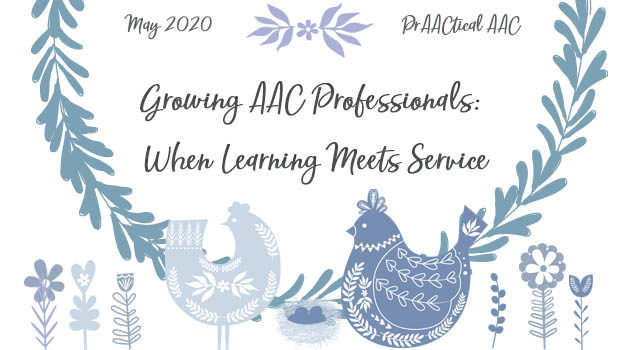
Teaching AAC to future SLPs is a longstanding passion of mine so when a fellow instructor, Vicki Haddix, reached out to talk about the AAC projects her graduate students had done, I knew that I wanted to share them with you. In today’s post, Vicki, a Clinical Assistant Professor at the University of Memphis, tells us about her most recent students and their projects. The materials they created can be used by parents and professionals alike.
Make sure to check out the link at the bottom to access the full array of materials that these talented students created.
Enjoy!
:::::::::::::::::::::::::::::::::::::::::::::::::::::::::::::::::::::::::::::::::::::::::::::::::::::::::::
As a professor, it’s always exciting when you see the great work that graduate students are doing and think about the potential that they are bringing to the field. I’ve taught the AAC class at the University of Memphis’s SLP graduate program for 5 spring semesters, and I always learn from my students.
When I designed the AAC course, I tried to incorporate elements of UDL within the class. One of the elements I’m particularly proud of is allowing the students to choose their own final projects, which are worth 50% of their grade. I give them the following guidelines:
Your final project should:
- Collect information from a variety of sources (i.e.: not only a survey or only research articles);
- Ground itself within the field of AAC specifically and SLP generally (this may or may not take the form of a literature review);
- Explicitly state how the information in the project is important to SLPs and/or users of AAC and their families and;
- Be well organized.
I meet with each student individually around mid-term to decide the project- often I need to remind them that this project is not a dissertation and needs to be finished within the semester. The students check in with me as needed through the rest of the semester, and then present to each other about what they did on the final day of class.
While there is nothing in the guidelines I give them that says their project should be practical and ready to distribute to the AAC community, more and more projects over the years have gone in this direction. Which is great, and I think they deserve a wider audience. I hope PrAACtical AAC readers will agree with me and find these materials useful!
First up is the project done by Rachel Dawson and Lauren McGainey. Earlier in the semester, as part of an assignment, they both chose to watch the USSAAC/ISAAC webinar given by Kathy Howery: Mental Health and Students with Complex Communication Needs.
They were inspired by this webinar to look further into narratives, and specifically how to teach narratives to children who use AAC. They dove into the research on this subject and then translated this into handouts for parents and SLPs. And, they came up with six activities that could be done to scaffold and encourage narrative development.
Rachel and Lauren recorded their class presentation, so you can hear them talk about the research they found, and how they decided to put together the handouts and activities.
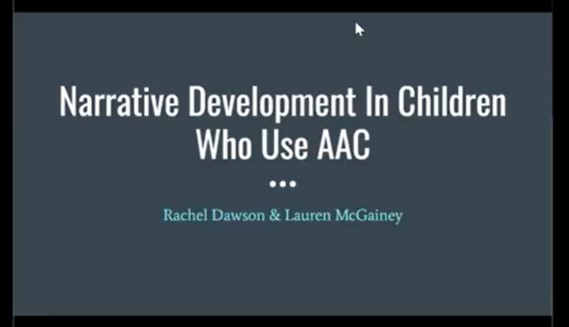 Direct Link to Video – https://www.youtube.com/watch?v=O9bkdLhRAhY
Direct Link to Video – https://www.youtube.com/watch?v=O9bkdLhRAhY
And the handouts and activities are here.
Next up are four projects that let me know as a professor that I got my point across about the importance of Literacy and AAC. Each of the students who created these projects had a different emphasis and end goal in writing and adapting these books.
- In Molly’s Voice, Taylor Allen wanted to create something for little girls of color to relate to as they obtained an AAC device, and to show the community that can surround AAC users.

- Betsy Mashburn took her idea of an adorable bunny accessing his device with his ear, and created and illustrated a rhyming story for children who are at an emerging literacy stage. She also created supplemental materials including a communication board and suggested comments that communication partners could make while reading A Day at the Market.
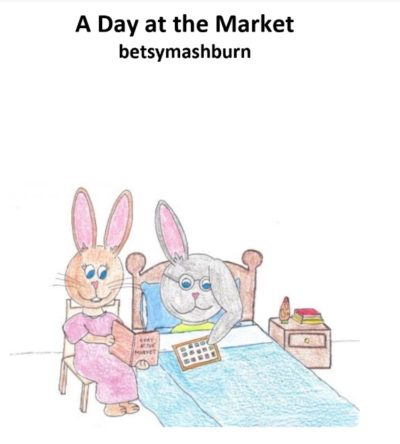
- Sarah Averette and Lauren Adler wanted to write a book that broke down some ableist barriers and focused on an AAC user just having some fun with peers. In A Field Trip Out of This World, they made a lot of careful choices to highlight good communication partner behavior.
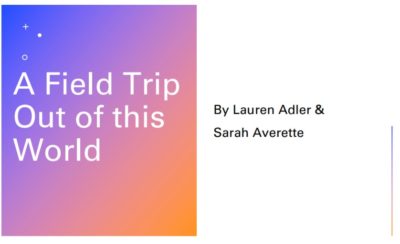
- Kristen Fowler and Elly Terry saw a need for some AAC to be infused into the special needs ministry at their churches. They adapted three Bible stories into Tarheel Reader books (The Creation Story, The Birth of Jesus, & The Resurrection Story), as well as communication boards and a tip sheet for those reading the books with AAC users.
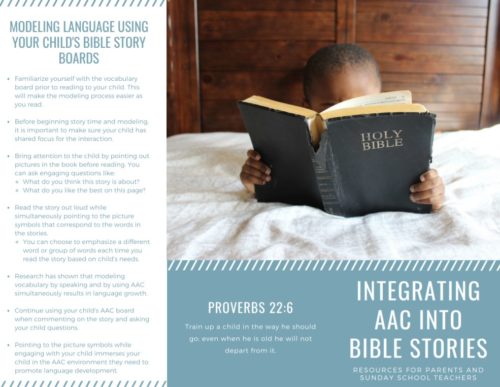
All of these projects, with supplemental materials and links to the Tarheel Reader books, can be found here.
Filed under: Featured Posts, PrAACtical Thinking
Tagged With: downloads, literacy, preservice AAC
This post was written by Carole Zangari


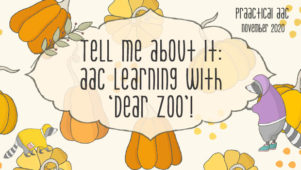
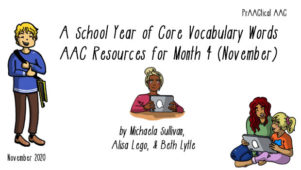
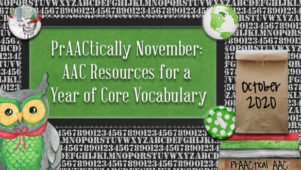
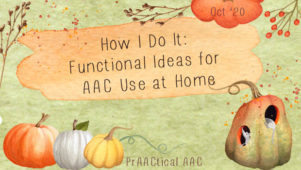
2 Comments
WOW! thanks for all the great resources.
These are wonderful! It’s so good to hear fresh ideas from the perspective of your students! Thanks for sharing. I’d love to hear more! Thanks Vicki!